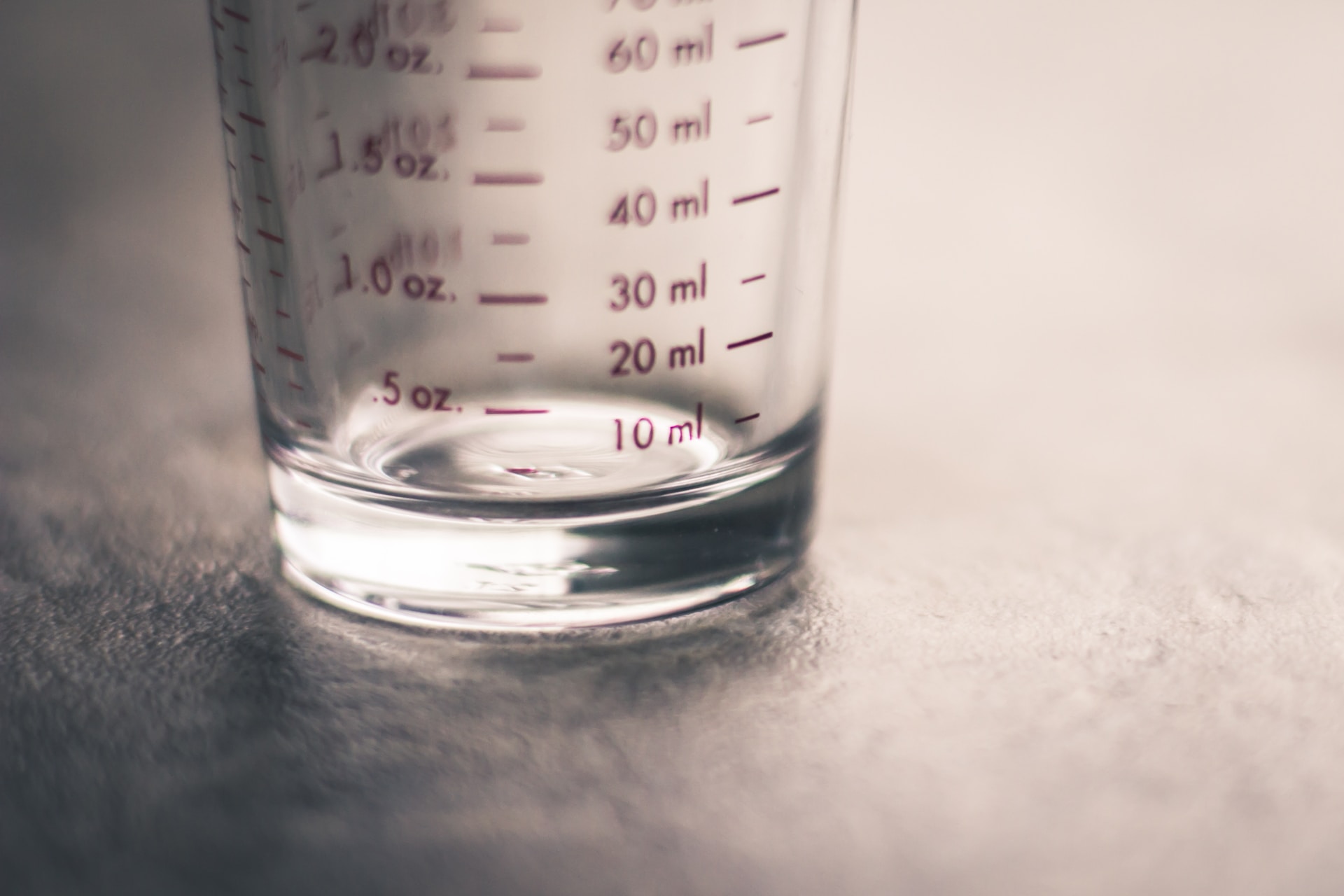
If you’ve ever found yourself questioning the measurement equivalence of a cup or pondering the difference between fluid and dry ounces in your culinary endeavors, this article is your comprehensive guide. Delving into the origins of cup and ounce measurements, their significance in modern culture, and the intricacies of measuring liquids versus dry ingredients, this piece is a must-read for anyone navigating the world of cooking.
Whether you’re a seasoned chef or a novice in the kitchen, understanding the nuances of these fundamental measurements can elevate your culinary skills. Join us on a journey through the science behind varying cup measurements, cooking measurement standards, and practical tips to enhance your precision in the kitchen.
Key Takeaways
- A standard cup in cooking equals 8 fluid ounces or approximately 240 milliliters.
- The origins of cup and ounce measurements trace back to ancient civilizations, playing a crucial role in culinary traditions globally.
- Cooking measurements include teaspoons (tsp), tablespoons (tbsp), ounces (oz), cups, quarts, liters, and gallons, providing a consistent framework for recipes.
- Precise measurement is paramount in achieving the desired taste and texture, especially when distinguishing between liquid and dry ingredients.\
- The density and composition of different ingredients lead to variations in cup measurements for 8 ounces.
- Water serves as a universal reference point in cooking measurements, with 1 cup of water equaling 8 ounces, regardless of volume or weight.
- Tips and tricks, such as memorizing equivalents, using visual aids, practicing with measuring tools, and understanding metric conversions, enhance cooking measurement accuracy.
The Basics: How to Measure One Cup and How Many Cups is 8 oz?
A standard cup in cooking measures 8 fluid ounces (fl oz) or approximately 240 milliliters (ml). However, it’s essential to differentiate between fluid ounces and weight ounces. When measuring liquids, 8 fluid ounces equal one cup, but when measuring dry ingredients, 8 ounces equal one cup by weight. To measure liquids accurately, use a liquid measuring cup with a spout for easy pouring. For dry ingredients, use a dry measuring cup and level off the excess with a straight edge.
Origins and Significance of Standard Cup and Ounce Measurements
The origins of cup and ounce measurements can be traced back to ancient civilizations. The cup, a versatile vessel for liquid measurement, has evolved over centuries. The ounce, derived from the Latin word “uncia,” was historically linked to the Roman libra, a unit of weight. These measurements have become ingrained in culinary traditions globally, providing a standardized language for cooks and bakers worldwide.
In modern culture, cup and ounce measurements facilitate international recipe sharing and enable precise replication of dishes. Standardization ensures that a cup of flour in the United States equals a cup of flour in Europe, fostering a global culinary community.
Cooking Measurement Standards: Teaspoons to Gallons
Cooking measurements encompass various units, each serving a specific purpose. Here are some common standards:
- Teaspoon (tsp): 1 tsp is equivalent to 5 ml.
- Tablespoon (tbsp): 1 tbsp is equivalent to 15 ml or 3 tsp.
- Ounce (oz): 1 oz is approximately 28 grams.
- Cup: 1 cup is 8 fluid ounces or about 240 ml.
- Quart: 1 quart is equal to 4 cups or approximately 946 ml.
- Liter: 1 liter is approximately 4.2 cups or 1000 ml.
- Gallon: 1 gallon is equivalent to 16 cups or about 3.8 liters.
These standards provide a consistent framework for recipes and ensure that the right balance of ingredients is achieved.
Achieving Culinary Precision: Liquid vs. Dry Measurements in Cooking
In the realm of culinary arts, precision in measurements is paramount for achieving the desired taste and texture in dishes. When dealing with cups and ounces, it’s crucial to distinguish between measurements for liquids and dry ingredients, as their properties introduce unique considerations.
Liquid Measurements:
- A standard liquid cup measures 8 fluid ounces (fl oz) or 240 milliliters (ml). This standard is universally recognized in cooking and baking.
- Liquid ounces are equivalent to their fluid-ounce counterparts. Therefore, 8 fluid ounces of water, for example, are also 8 ounces by weight.
- Liquid measuring cups are typically made of clear glass or plastic and have a spout for easy pouring. To measure accurately, fill the cup to the desired line at eye level to account for the slight curvature at the surface of the liquid.
Dry Measurements:
- When it comes to dry ingredients, the standard cup measurement is 8 ounces by weight. However, the volume of the dry ingredient can vary based on factors like density, compaction, and aeration.
- Dry measuring cups are designed with a flat rim, allowing for precise leveling of the ingredients. To measure dry ingredients accurately, spoon the ingredients into the measuring cup and level it off with a straight edge.
Conversion Between Liquid and Dry Ounces:
- While 1 cup of liquid is equivalent to 8 fluid ounces, 1 cup of a dry ingredient can vary in weight. For example, 1 cup of all-purpose flour might weigh around 4.25 ounces, whereas 1 cup of granulated sugar can weigh about 7 ounces.
- It’s essential to be mindful of these differences when converting between liquid and dry measurements. The weight of a dry ingredient in ounces does not necessarily correspond directly to its volume in cups.
The Science Behind the Perfect Cup Measurements for 8 ounces
- Density and Composition: The variations in cup measurements for 8 ounces of different food items can be attributed to differences in density and composition. However, substances like oils, butter, and cheeses may have different compositions, affecting their volume and cup measurements for 8 ounces. Here’s a breakdown:
- 8 oz of Water: 1 cup (liquid measurements are weight-equivalent).
- 8 oz of Olive Oil: Approximately 0.93 cups (due to oil’s lower density compared to water).
- 8 oz of Butter: 2 cups (butter has a different composition, affecting its volume).
- 8 oz of Shredded Cheese: Approximately 2.67 cups (varied density in shredded form).
- 8 oz of Cream Cheese: 1 cup (dense and consistent texture).
- 8 oz of Pasta: Approximately 2.67 cups (due to the shape and arrangement of pasta).
- 8 oz of Chocolate Chips: Approximately 1.33 cups (varied density due to irregular shapes).
- Water (Universal Reference): Water serves as a universal reference point in cooking measurements. One cup of water weighs approximately 8 ounces, whether measured by volume or weight. This consistent measurement is due to water’s uniform density and is often used as a benchmark for comparing other ingredients.
- Olive Oil (Lower Density): Olive oil, being less dense than water, requires more volume to reach 8 ounces. Approximately 0.93 cups of olive oil make up 8 fluid ounces. The lower density of oil compared to water is why the volume differs, emphasizing the importance of considering the specific characteristics of each ingredient when measuring.
- Butter (Different Composition): Butter, with its unique composition of fats and moisture, has a different cup measurement for 8 ounces. It takes approximately 2 cups of butter to reach 8 ounces, illustrating how the composition of an ingredient can significantly impact its volume. The solid nature of butter also contributes to its distinct measurement compared to liquid oils.
- Shredded Cheese (Varied Density): Shredded cheese exhibits a varied density due to its irregular shape and the presence of air pockets. As a result, 8 ounces of shredded cheese equates to roughly 2.67 cups. The irregularities in the shredded form create gaps, affecting the volume the cheese occupies in a cup.
- Cream Cheese (Dense and Consistent): Cream cheese, with its dense and consistent texture, aligns closely with water in terms of measurement. 8 ounces of cream cheese equals 1 cup. The uniformity of cream cheese allows for a more straightforward volume-to-weight conversion compared to ingredients with varying densities.
- Pasta (Shape and Arrangement): The shape and arrangement of pasta contribute to differences in cup measurements. Approximately 2.67 cups of dry pasta make up 8 ounces, emphasizing how the physical characteristics of the ingredient impact its volume. Factors like the shape and arrangement of pasta pieces influence how they pack into a cup.
- Chocolate Chips (Irregular Shapes): Chocolate chips, characterized by irregular shapes and sizes, exhibit varied density. About 1.33 cups of chocolate chips make up 8 ounces due to the irregularities in their shape. The spaces between the chips contribute to the differences in volume compared to more uniform ingredients.
Also Read: Gallon Science: How Much Does a Gallon of Milk Weigh?
Tips and Tricks for Cooking Measurement Conversions
- Memorize Basic Equivalents: Start by memorizing fundamental equivalences, such as 1 cup equaling 8 fluid ounces or 8 ounces by weight. These foundational conversions serve as building blocks for more complex measurements.
- Use Visual Aids: Visualizing common objects can help solidify measurement concepts. For instance, associate a tennis ball with the volume of 1 cup, making it easier to imagine and recall during cooking. This visual association can be particularly helpful for those who are more visually oriented learners.
- Practice with Measuring Tools: Regular use of measuring cups and spoons builds familiarity and confidence in measurement conversions. The more hands-on experience you have, the more intuitive these conversions will become.
- Create Mnemonics: Developing mnemonics or memory aids can make recalling conversions more engaging and memorable. For example, create a rhyme or acronym to remember the number of teaspoons in a tablespoon or the number of cups in a quart.
- Understand Metric Conversions: While many recipes use imperial measurements, understanding metric conversions can be beneficial, especially when dealing with international recipes. Familiarize yourself with common metric equivalents, such as 1 liter being approximately 4.2 cups.
Best Practices for Precise Measurements
- Differentiate between liquid and dry measurements, using liquid measuring cups for liquids and dry measuring cups for dry ingredients.
- Memorize fundamental equivalents like 1 cup equals 8 fluid ounces or 8 ounces by weight.
- Visualize common objects to aid in recalling measurement concepts, such as associating a tennis ball with the volume of 1 cup.
- Regularly practice with measuring tools to build familiarity and confidence in measurement conversions.
- Create mnemonics or memory aids for recalling conversions, making the learning process engaging and memorable.
- Understand the science behind varying cup measurements for different food items due to differences in density and composition.
- Familiarize yourself with both imperial and metric measurements, especially when dealing with international recipes.
Final Thoughts
In the intricate world of culinary arts, mastering the art of measurement is a gateway to precision and perfection. From the ancient origins of cup and ounce measurements to the contemporary global culinary community, this article has explored the significance and practical applications of these fundamental units. Armed with the knowledge of precise liquid and dry measurements, the science behind varying cup sizes, and practical tips for accurate conversions, you’re better equipped to embark on culinary adventures with confidence. So, measure up, cook with precision, and savor the delightful results of a well-balanced recipe.
Also Read: Measure Up! Mastering the Quarts-to-Cups Conversion
FAQs on Cooking Measurements
- Q: Why is it important to differentiate between fluid ounces and weight ounces in cooking?
- A: Distinguishing between the two is crucial because 8 fluid ounces of liquid do not always equal 8 ounces by weight for dry ingredients due to variations in density.
- Q: What is the significance of water as a universal reference point in cooking measurements?
- A: Water’s consistent density makes 1 cup of water equivalent to 8 ounces, serving as a reliable benchmark for comparing other ingredients.
- Q: How do you measure liquids accurately?
- A: Use a liquid measuring cup with a spout, fill it to the desired line at eye level, and account for the slight curvature at the liquid’s surface.
- Q: What are some best practices for cooking measurement conversions?
- A: Memorize equivalents, use visual aids, practice with measuring tools, create mnemonics, and understand both imperial and metric measurements.
- Q: Why do shredded cheese and chocolate chips have varied cup measurements for 8 ounces?
- A: Their irregular shapes and sizes create varied densities, impacting the volume they occupy in a cup.
- Q: How can one ensure accurate measurement of dry ingredients?
- A: Use dry measuring cups, spoon the ingredients into the cup, and level off the excess with a straight edge.
- Q: Why is understanding the science behind cup measurements for different food items essential?
- A: Variations in density and composition of ingredients lead to different cup measurements for 8 ounces, influencing the volume of each ingredient.
#CookingMeasurements #CulinaryPrecision #KitchenTips #CupAndOunce #CookingBasics #MeasurementEquivalents #CulinaryScience #CookingSkills #LiquidVsDry #InternationalRecipes #FoodScience #MetricConversions #KitchenHacks #PrecisionCooking #CulinaryKnowledge







No comment yet, add your voice below!